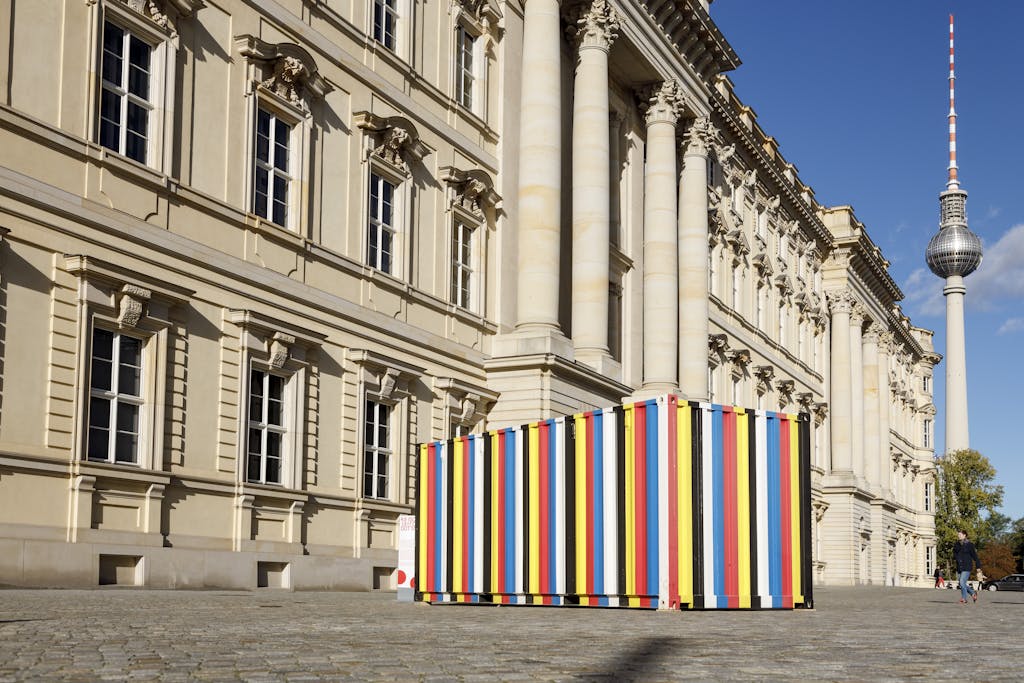Kimsooja at HUMBOLDT FORUM, BERLIN, GERMANY
"Bottari 1999-2019", 25 OCT 2023 – 19 FEB 2024

Kimsooja’s ‘Bottari 1999-2019’ is a continuation of the artist’s well-known concept of the "bottari"(Korean for "bundle"). The over six-meters-long shipping container is filled with personal belongings stemming from the artist’s household in New York where she lived from 1999 until 2019.
For more than thirty years, Kimsooja has dedicated her oeuvre to the themes of migration, cosmopolitanism and transculturalism. During her childhood she moved around frequently due to her father’s military profession, and since the beginning of her artistic career in the 1990s, she has lived a nomadic life - constantly traveling between continents - which became a major theme in her creative process. Kimsooja’s exploration of dislocation often makes use of "bottari", traditional Korean bedcovers made into bundles by women of all classes, which wrap and protect one’s most important belongings during transit, often when a native place had to be left behind. The artist first tied together 'Bottari' in 1992, during her residency at the MoMA PS1; since then she has repeatedly taken them up anew as an artistic evolution and as a signature, each time in a site-specific manner, responding to the personal and social condition around her.
Photo by Pierre Adenis
In 2019, when moving from the United States, where she had lived since 1999, to South Korea, Kimsooja extended the traditional notion of “bottari" and created a monumental version of it in a 6-meters-long shipping container in which she gathered personal belongings from her East Village apartment in New York of over twenty years. By sending her complete household to travel around the world, packed in ‘Bottari 1999-2019’, Kimsooja investigates the concept of home, situating it not as fixed and constant but rather as mutable and subject to continuously changing circumstances. It is painted with bright and vibrant lines in the traditional Korean color spectrum of white, black, yellow, blue and red, the Obangsaek. In traditional Korean arts or textiles these colors symbolize five cardinal points (North, East, South, West, and Center) as well as five natural elements (Wood, Fire, Earth, Metal, and Water). This cardinal color spectrum represents the freedom of choosing one’s country and dimension of mobility. This steel “bottari" becomes a metaphor for the artist’s perpetual displacements and constitutes in her own words, a “separate body, an autonomous world that can contain everything, like a ship” that can be closed without revealing its contents. “Homeland,” for Kimsooja, “is no topographically definable place but a state of consciousness and belonging.”
VISIT WEBSITE